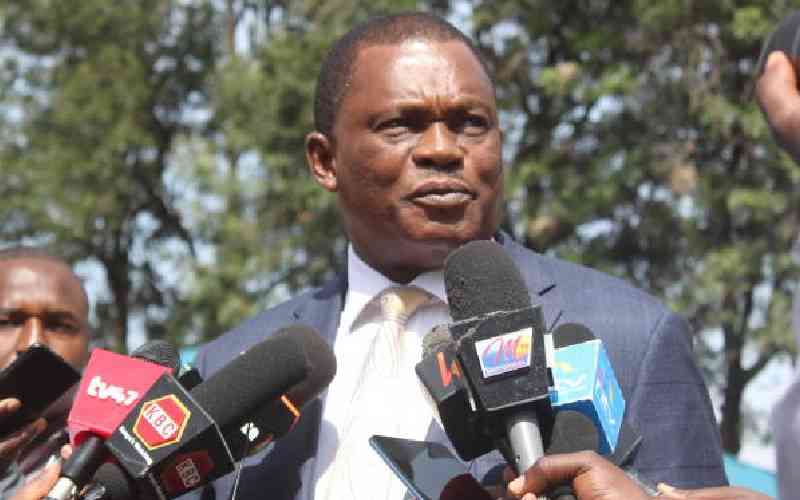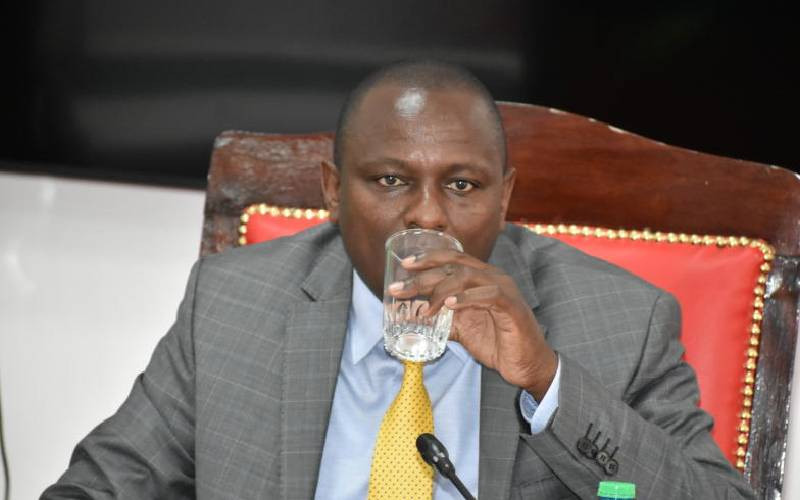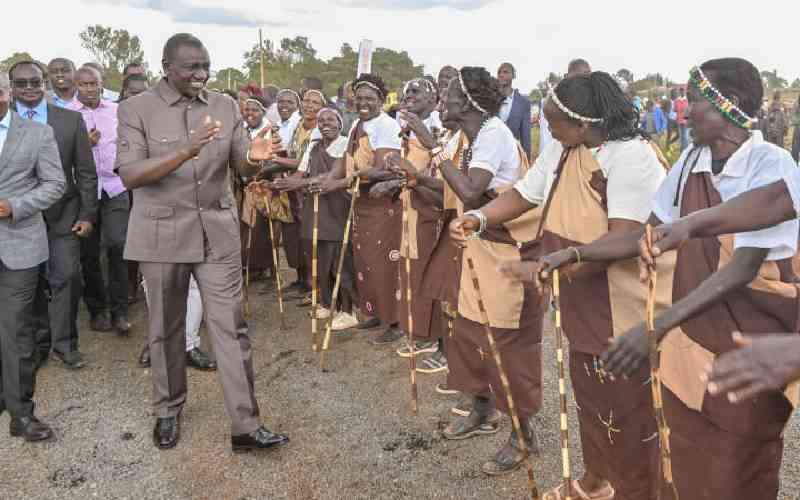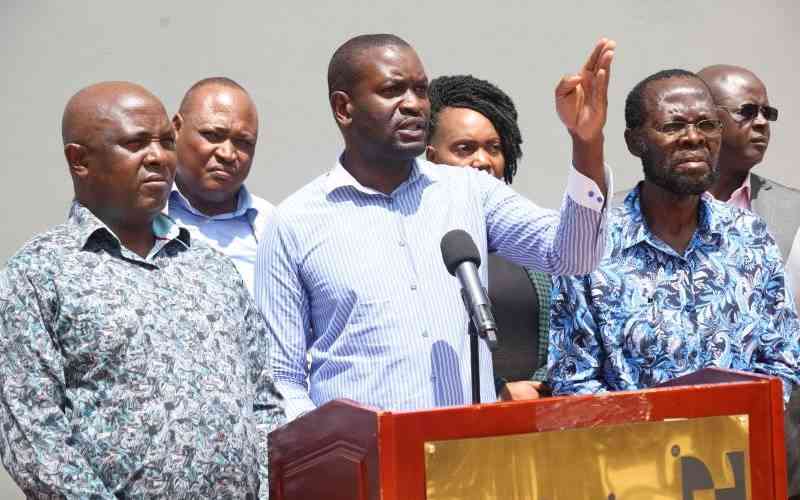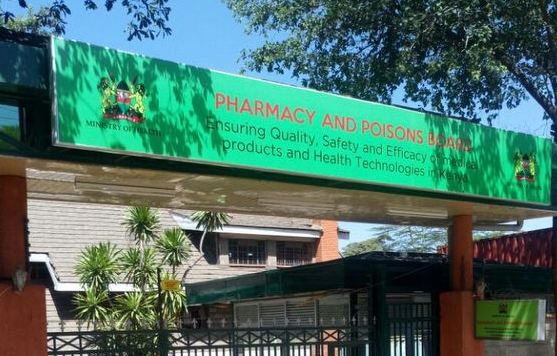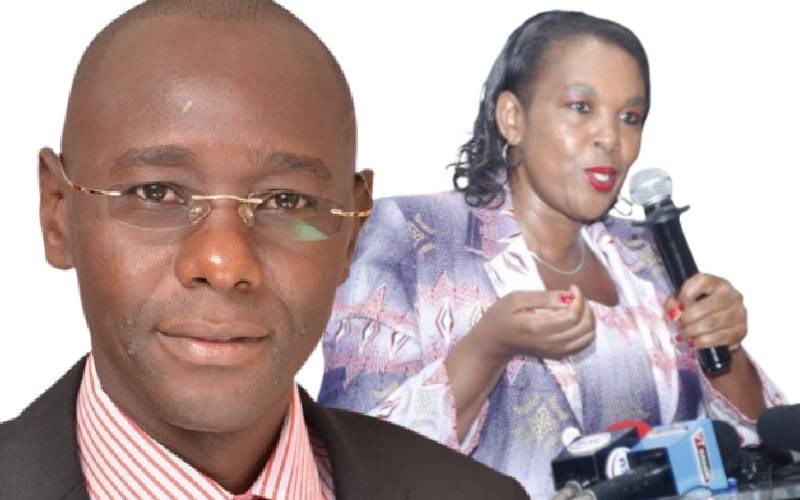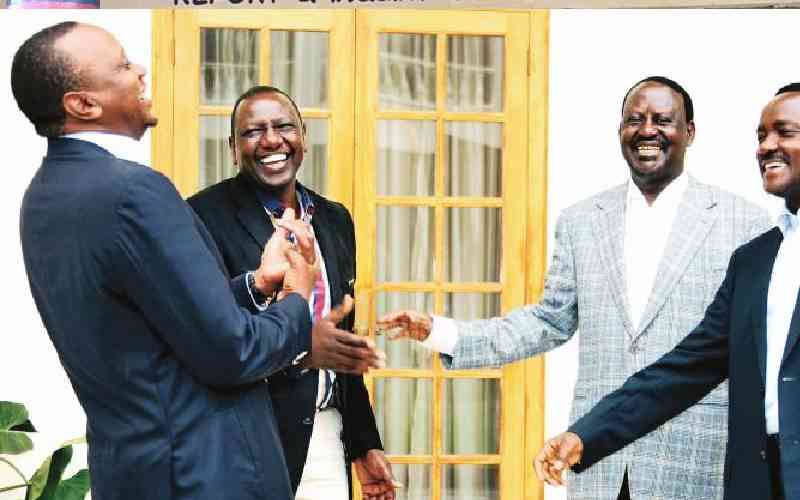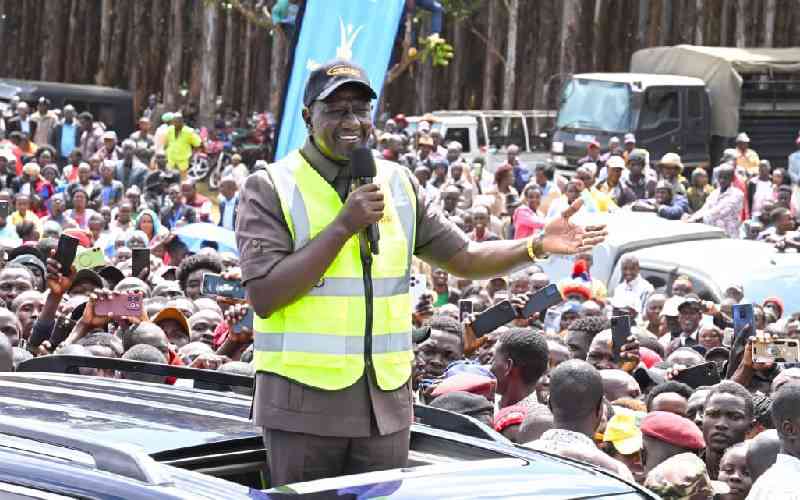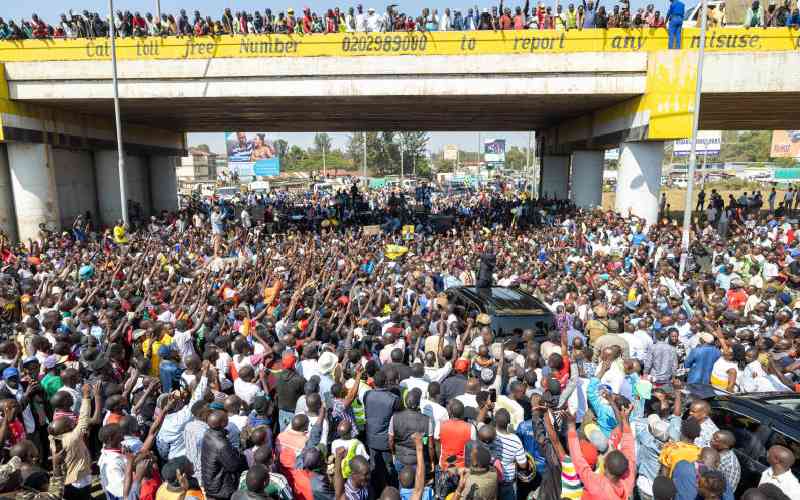
The campaign mood that grips the country during elections has refused to fade away two and half years after Kenyans voted for the Kenya Kwanza administration and its leader, President William Ruto.
The 2027 political alignments have started in earnest with President William Ruto’s broad-based government sucking in Opposition chief Raila Odinga in a matrix that has confounded friends and foe alike, complicating the 2027 election game plan.
Deputy President Rigathi Gachagua, threatened by the isolation, brought about by the broad-based government, is reportedly in talks with Wiper leader Kalonzo Musyoka to form a political alliance alongside a section of disgruntled leaders from Western region that may face off with Ruto-Raila political establishments.
Kalonzo is trying to chart his own political destiny after Raila, his political partner, jumped ship to support Ruto. He is doing this by attending church services and later holding political rallies.
The President who would have been expected to be spending premium time in his office studying reports and briefs on the policy interventions he ought to take in support of his key legacy projects is in most instances on a roll in the countryside.
- Ruto remains mute as healthcare crisis worsens
- Government calls on KMPDU to end strike
- Ruto meets KMPDU officials, promises lasting solutions to end industrial strikes
- Ruto forms a 20-member team to audit healthcare resources
Keep Reading
He has been engaging rural folk in articulating developmental politics and seeking concurrency from villagers on the efforts his government makes in its transformative agenda.
As a result, service delivery has been greatly hurt with Kenyans abandoning their daily hustles to attend presidential functions in a move that has disrupted the working schedules and activities of ordinary Kenyans.
Ruto’s critics have accused him of presenting the dual image of himself as President and the presidential candidate for 2027 thereby eating into the working time of Kenyans.
“The empty rhetoric and the incessant premature campaigns disguised as countrywide development tours is not necessary for an economy that is struggling under the heavy burden of debt. Kenyans need to be given room to fully engage in productive activities,” Prof Gitile Naituli, a political analyst, observed.
He said the President should direct his energy in policy direction as opposed to putting himself in the implementation noting that he should let his army of public servants drive his policy implementation.
Since his election, the President has either been airborne or holding political rallies until the unrest that came along after the Gen Z protests two months ago that threw his missions into an abyss.
But after tensions quelled, the President went back to his missions and started by visiting Nakuru on July 15 where he laid the foundation stone for the construction of the Keringet fresh produce market in Kuresoi South Constituency and later addressed the thronged crowd, regaining balance on upholding his political rhetoric that knows very few bounds.
On July 25, he was in Tharaka Nithi County and later atop the presidential guzzler addressed a roadside rally where he defended his broad-based government.
The following day, he was at Coast for the very same mission where he visited Mombasa, Kilifi and Kwale for three days.
He later toured Mt Kenya region and later Kisii where he re-launched some of the development projects even as he explained to the locals on his decision to form an inclusive government.
Political analyst Javas Bigambo noted that the President’s tours were purely political and that they were meant to test the grounds on how his broad-based government has been received by Kenyans.
 The Standard Group Plc is a multi-media organization with investments in media platforms spanning newspaper print
operations, television, radio broadcasting, digital and online services. The Standard Group is recognized as a
leading multi-media house in Kenya with a key influence in matters of national and international interest.
The Standard Group Plc is a multi-media organization with investments in media platforms spanning newspaper print
operations, television, radio broadcasting, digital and online services. The Standard Group is recognized as a
leading multi-media house in Kenya with a key influence in matters of national and international interest.

